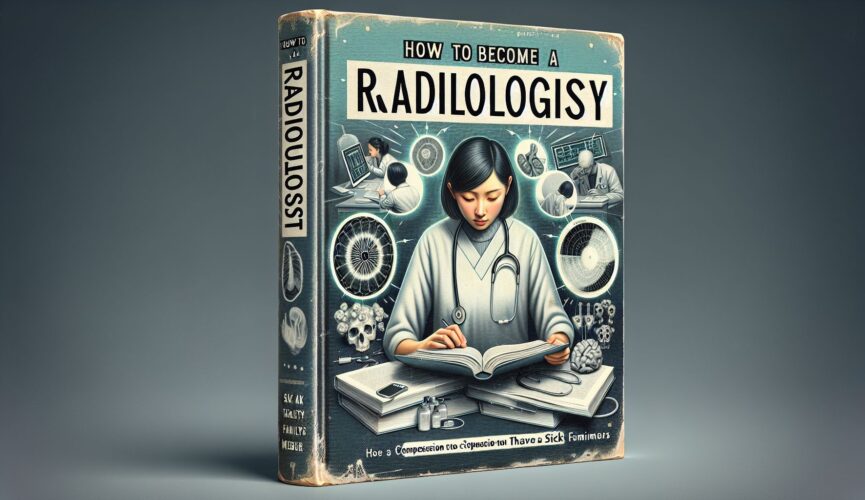Considering a career in radiology? If you have a sick family member or loved one who has undergone diagnostic imaging or radiation treatment, you may have witnessed the invaluable contribution of radiologists firsthand. These medical professionals play a crucial role in the wellness centers and recovery processes of countless patients. If you find yourself drawn to this field and have a genuine compassion for others, here is a comprehensive guide on how to become a radiologist.
Introduction to Radiology
Radiology is a specialized branch of medicine that uses various imaging techniques to diagnose and treat diseases and injuries. Radiologists are responsible for interpreting medical images, such as X-rays, MRIs, CT scans, and ultrasounds, to assist in the accurate diagnosis and subsequent treatment planning.
Education and Training
To become a radiologist, it is essential to complete several years of rigorous education and training. The journey typically begins with a Bachelor’s degree in pre-medical studies or a related field. It is vital to excel in subjects like biology, chemistry, physics, and mathematics during your undergraduate studies.
Upon completion, aspiring radiologists must attend medical school, which usually takes four years. During this time, students undergo an intensive curriculum focusing on general medical knowledge. Subjects like anatomy, pathology, pharmacology, and internal medicine are covered extensively to provide a solid foundation.
Following medical school, graduates must complete a five-year residency program in diagnostic radiology. This program provides hands-on experience in different imaging modalities while also encompassing theoretical education. Residents work closely with experienced radiologists, gaining exposure to a wide range of medical conditions and mastering the art of image interpretation.
After residency, some radiologists choose to pursue further specialization through fellowship programs. These programs typically last for one to two years and offer focused training in a particular radiology subspecialty, like neuroradiology, pediatric radiology, or interventional radiology.
Licensing and Certification
After completing the required education and training, the next step toward becoming a radiologist involves obtaining proper licensure. Each country or state may have specific licensing requirements, so it is important to thoroughly research the regulations in your desired location.
Once licensed, many radiologists pursue board certification through the appropriate governing medical board. In the United States, for example, radiologists can seek certification from the American Board of Radiology (ABR). Board certification ensures a certain level of expertise and is recognized as a mark of distinction in the field.
Essential Skills and Qualities
To excel as a radiologist, it is not just academic knowledge and technical proficiency that matter. Certain skills and qualities are integral to becoming an exceptional healthcare professional in this field. These include:
- Analytical Skills: Radiologists must possess strong analytical skills to interpret complex medical images accurately. Attention to detail and the ability to identify subtle abnormalities are crucial in providing accurate diagnoses.
- Communication Skills: As a radiologist, you will often interact with patients, referring physicians, and other healthcare professionals. Effective communication skills facilitate clear and concise reporting and collaboration with the broader medical team.
- Empathy and Compassion: Radiologists work closely with patients, especially when discussing critical diagnoses. Having empathy and compassion helps build trust and support patients who may be experiencing distress or uncertainty.
- Adaptability: Radiology is a continually evolving field, with advancements in technology and techniques. Being adaptable and open to learning is crucial to staying up-to-date and providing the best care to patients.
Professional Growth and Job Outlook
Radiology offers a diverse range of career opportunities. Apart from working in hospitals and diagnostic centers, radiologists can also pursue academic positions, research roles, or industry-related work. The demand for radiologists is expected to grow significantly in the future due to an aging population and advancements in medical imaging technologies.
Conclusion
For those with sick family members, considering a career in radiology can be a deeply personal choice. By becoming a radiologist, you have the opportunity to contribute to the wellness centers and recovery processes of countless individuals, potentially making a difference in their lives. While the journey may be demanding, the rewarding nature of the work and the ability to positively impact patient outcomes make it a truly fulfilling profession. So, if you possess the necessary dedication, empathy, and analytical skills, embark on your path to becoming a radiologist and shape a future dedicated to healing and diagnosis.
